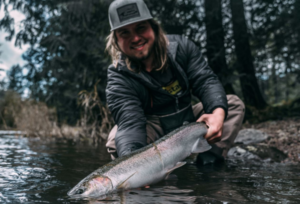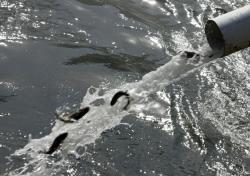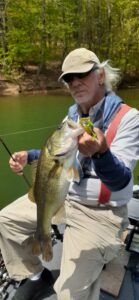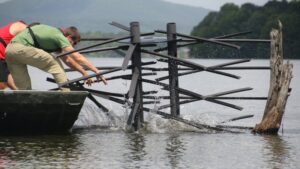Steelhead Survival of Catch and Release Angling
Written by Will Lubenau, University of Idaho
from The Fishing Wire

Safely release steelhead
The second field season for the steelhead tagging study being conducted in Idaho has officially started. Tagging at Lower Granite Dam on the Snake River began on July 2, 2020. As of July 19th, 205 steelhead have already been tagged and released as part of this research to evaluate how many wild and hatchery steelhead are caught by anglers, and how often each year.
For the second field season, the goal is to tag a total of 2,000 steelhead; 1,000 adipose-intact fish and 1,000 adipose-clipped fish so obviously we are just getting started with our second season. Anglers will be asked to examine all fish caught for a tag that is located near the dorsal fin. To report a tagged fish, please go to https://idfg.idaho.gov/fish/tag/add. Those who return a tag to Idaho DFG get a reward.
Researchers at the University of Idaho have been taking our first look at the data from the first season of the steelhead study and are learning some interesting things. For additional information on preliminary study results, you can read an article recently published in the Lewiston Tribune.
There are two primary objectives to this study., 1) estimate how many wild steelhead are caught in Idaho’s steelhead fisheries and 2) take a closer look at how well steelhead survive being caught and released. These are important to understand for Idaho’s steelhead fisheries since we manage for both hatchery fish harvest opportunity and wild fish recovery as part of the fishery structure.
Currently, IDFG uses hatchery fish to estimate how many wild fish are caught in the state. IDFG assumes hatchery and wild fish are encountered by anglers at an equal rate. For example, if based on IDFG surveys it is estimated that 40% of hatchery fish were encountered by anglers, then it is assumed that 40% of our wild fish were also encountered by anglers. This study was set up to test if that assumption was accurate.
We tagged 878 wild steelhead at Lower Granite Dam last year. Of the 878 fish, 200 were caught and reported by anglers. However, we recognize that some tags are caught and not reported so it is important to account for non-reporting in our estimates. Since some of the tags had rewards associated with them, we can use that to estimate how many tags were caught and not reported. By combining the tag reports with an estimate of how many tags were caught and not reported, we get an idea of how many wild fish were encountered.
The main findings so far.
In the first year of the study, the encounter rate for Idaho’s wild fish was about 35% while the hatchery fish encounter rate was about 40% to 45%. With wild steelhead conservation being a primary concern for IDFG, this is good news because it means the wild steelhead encounter rate estimated in the past may have been conservative.
To estimate survival of caught-and-released wild fish, we used detections from PIT tag arrays (click here to learn more), fish weirs (click here to learn more), and hatcheries to document survival of our study fish. About 65% of the wild fish reported as caught were detected after capture and known to have survived while about 62% of fish not reported as caught were detected and known to have survived. Preliminarily, the nearly equal rates of detection for fish reported as caught and fish not reported as caught suggest that catch-and-release angling has little influence on steelhead survival.
For more information on Wild salmon and steelhead click here.



